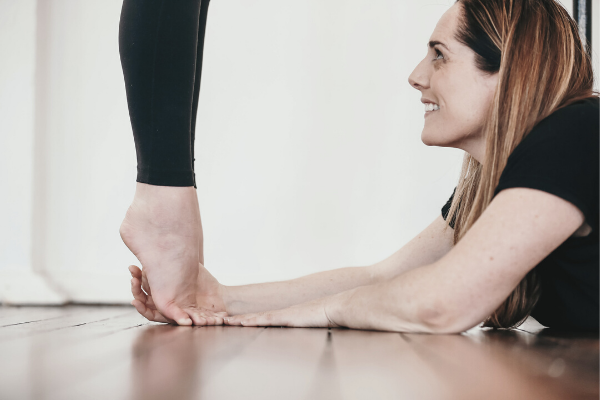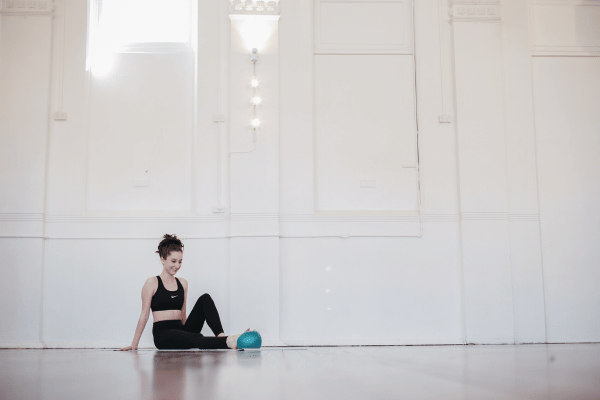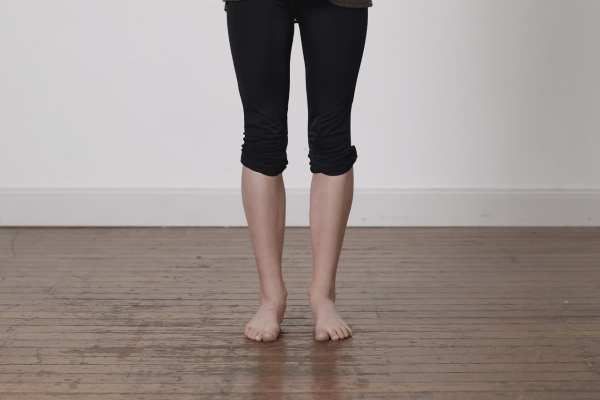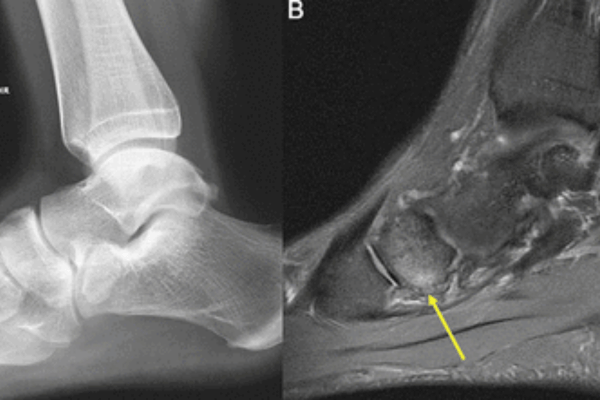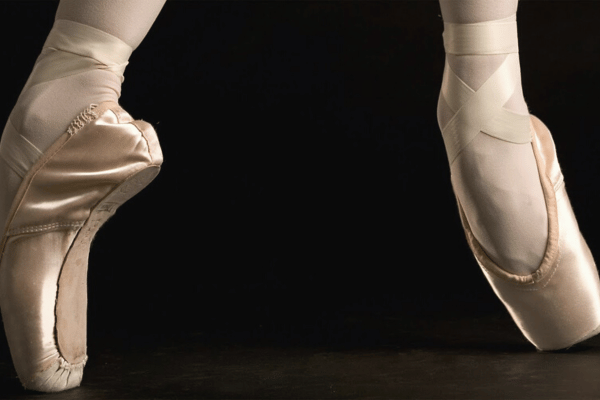Does Pointe Work Cause Bunions?
Many girls (and their mothers) are concerned about the possibility of developing unsightly and painful damage to their toes. This is a very real and valid concern! While pointe work does not cause bunions in most people, if pointe is commenced too early, or if there is a family predisposition to getting bunions (especially on your mother's side) it may increase their development.
WHAT IS A BUNION?
Let’s start with a little discussion on what bunions actually are. A bunion (Hallux Valgus) is an abnormal lump of bone that forms on the joint at the base of the big toe, which can become quite red and inflamed. Often the range of motion in the big toe becomes restricted and even working on demi pointe is difficult.
A bunion is a mal-alignment of the big toe joint, with an inwards drift of the toe and a large bony 1st toe joint so the toes no longer looks straight. While most people think that the problem is the big toe drifting in, often the problem starts when the first metatarsal (the major foot bone that attaches to the big toe) starts to angle away from the foot.
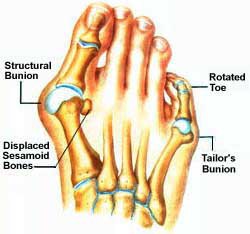
ANATOMY OF A BUNION
The foot is made up of many small bones that sit perfectly together forming many joints. The big toe joint comprises of the first metatarsal and the proximal (close) phalanx of the toe.
A bunion forms when the base of the toe (first metatarsal) drifts away from the second metatarsal. The 1st metatarsal rotates and drops and so no longer sits in its correct alignment. The tip of the first toe then rotates and drifts inwards.
Over time, under the continuing stress of this altered position of the joint and the irritation that this causes, the joint can become inflamed.
WHAT CAUSES A BUNION TO FORM?
Bunions can be caused by the following factors:
- Hereditary (especially via the female line)
- Rolling in (pronation) of the feet
- Walking with turned out feet
- Weakness of muscles controlling the big toe
- Weakness of intrinsic muscles of the feet
- Leaning on the big toe in a tendu, especially to second or derrière
- Reduced mobility of the big toe when on demi-pointe
- Restricted pointe range
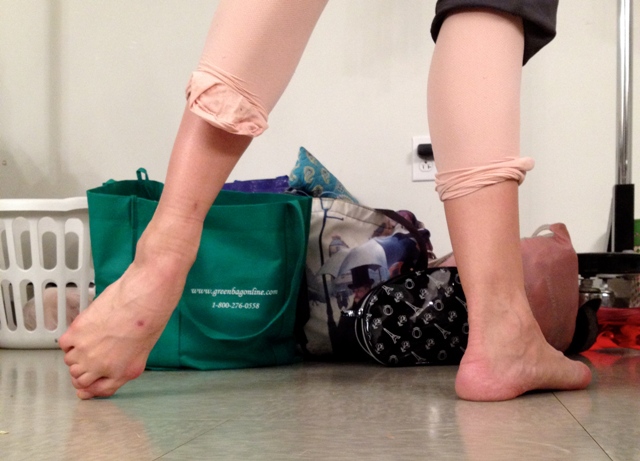
WHAT ARE THE SYMPTOMS?
- Alteration in the alignment of the first toe
- Pain in the 1st toe joint with movement
- Restriction in range of demi-pointe
- Inflammation of the 1st toe joint
- Rotation of the big toe so that the nail no longer faces upwards
- Occasionally bruising of the toenail occurs
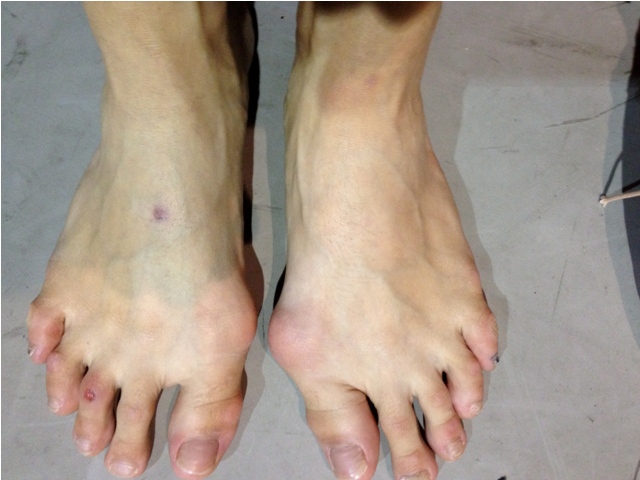
EFFECTIVE TREATMENT
Depending on how many of the causative factors are true for the dancer with bunions, a series of exercises to ensure correct alignment and stability of the lower limb should be implemented. Many exercises to target these areas are described in detail in The Perfect Pointe Book and the Advanced Foot Control for Dancers course. Other treatments that can help manage bunions include:
- Supportive footwear with correct width and arch support can provide relief –shoes such as ballet flats, thongs (flip flops), and Ugg boots (or slippers) should be avoided
- Mobilisation of the midfoot to help re-align the toe correctly, and then taping and padding in the shoe to keep the toe-in alignment.
- Taping to help draw the 1st metatarsal back in towards the second and correct any rotation and drop of the 1st metatarsal.
- Foam padding shaped like a donut to offload the pressure on the outside of the big toe.
However, correcting the placement of the toe is actually a tiny part of the rehabilitation of a bunion. One of the most important factors is being able to identify and correct all of the contributing factors to ensure that your bunion does not get any worse. In some cases, you can dramatically alter the appearance of the big toe and significantly decrease pain levels.
It is important to establish exactly why your bunion is occurring. This can not only help you treat the condition more effectively but can also help you prevent the bunion from becoming worse. A bunion (Hallux Valgus) is an abnormal lump of bone that forms on the joint at the base of the big toe, which can become quite red and inflamed. Often the range of motion in the big toe becomes restricted and even working on demi-pointe becomes difficult.
While most people think that the problem is the big toe drifting inwards, often the problem starts when the first metatarsal (the major foot bone that attaches to the big toe) starts to angle away from the foot. Over time, under the continuing stress of this altered position of the joint and the irritation that this causes, the joint can become inflamed. As a result of this, there is often an extra bony growth around the toe joint.
While no amount of conservative treatment can remove any bony growth, Some simple massage and taping techniques can help realign the foot and toe. This is very important before commencing any exercises aimed at strengthening the foot to ensure that the foot is being trained in optimal alignment.
For more information and videos on how to manage bunions, please check out our special "Bye Bye Bunions" Injury Report. This PDF has everything you need to know about preventing and managing bunions and includes videos and taping techniques to help you out.
If you have purchased The Advanced Foot Control for Dancers program you will have access to this PDF for free in the member's area.
Pointe Resources
If you are looking to delve deeper into this topic, check out the following programs:
- The Perfect Pointe Book: This course was originally designed to help students and dance teachers safely prepare for pointe work. The four stages of tests and exercises within the book are ideal for pre-pointe preparation classes, students close to achieving pointe shoes and students already en pointe looking for extra strength and technique training.
- Pointe Range: This online program comprises of 41 clear and concise videos, totalling just under 2 hours play time, this course begins with a series of assessments to establish exactly what structures are restricting your pointe range. It then explores a diverse array of massage techniques, joint mobility exercises and fascial mobilisers to safely improve your pointe range. This is followed by an in depth look at retraining all of the muscles that stabilise the foot and ankle to allow you to actually use your new found pointe range in class.
- Pointe Intensive: This online virtual workshop is designed for both Dance Teachers & Health Professionals working with dancers. This three day Intensive will give you the most up-to-date advice in the industry to help you understand your students’ needs, analyze their differences, and them you the tools to help your students become the best dancer they can be.



